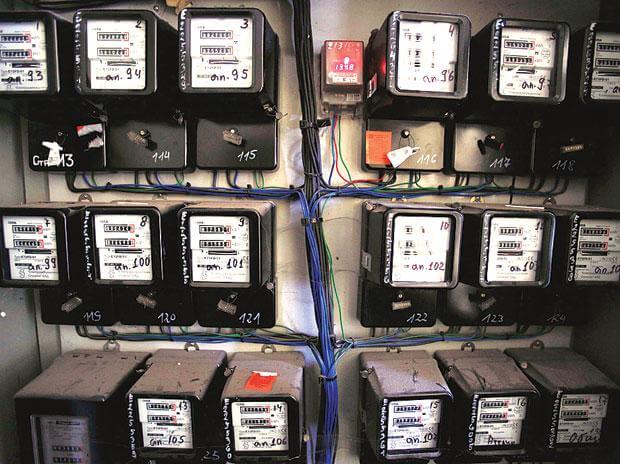
Nawabdin Electrician is a Pakistani short story by Pakistani Writer Daniyal Mueenuddin. In this story, Mueenuddin has depicted the circumstances faced by households of a lower class in Pakistani less privileged areas.
Daniyal Mueenuddin is a Pakistani-American writer who is very popular for his short stories and has won various awards like Commonwealth Writers’ Price, The Story Price and many other awards.
In this article, we have explained the Nawabdin Electrician Summary, Nawabdin Electrician Characters and Themes.
Burnt Shadows Summary, Characters and Main Themes
Nawabdin Electrician Summary
Nawabdin Electrician is a short story by a Pakistani writer Daniyal Moinuddin.
He mostly writes about Pakistani traditions. This story is related to Pakistani society and all Asian societies.
In this Nawabdin Electrician Summary, we have tried to explore the perspective of Daniyal Mueenuddin towards the life of a lower class pakistani.
It revolves around Nawabdin Electrician who is an electrician and breadwinner of his family. Nawabdin is skillful in cheating electric companies as he slowdowns the meter of electricity for his patron.
He works for K K Harooni. Harooni is a landlord and rich person having a lot of fields.
Nawabdin slow down the meter so that the fields of Harooni can be watered without paying much for electricity.
Sometimes he uses it to heat the pipes, sometimes to connect the wires of electricity, and so on. These tricks guaranteed his employment on the farm of K. K. Harooni.
Nawabdin married with his love of youth and was blessed with twelve daughters and a son. The salary that was given by Harooni was the only way of living.
He was a caring and devoted father that wanted to give his daughters a good dowery.
Harooni still had influence in the Islamabad bureaucracy. Whenever Harooni visited farms, Nawabdin Electrician was found sitting under a Banyan tree with servants to meet him, in this way, Nawabdin Electrician won his Favour and asked him for a motorcycle.
Nawabdin Electrician was eloquent and impressed his patron by giving the reference of old age and old cycle One day he received a Honda 70 as a gift for illegal work.
The motorcycle meant a lot to him as it gave him a reputation in society. Even the villagers began to call him UNCLE as he was the only one who had a modern motorcycle in the village.
Nawabdin Electrician was also asked to give his opinion in their affairs after having a motorcycle.
The condition of his house was poor but at the same time, they were happy. One day he repaired a sugarcane press and brought five kilos of sugar for breakfast. They ate bread with syrup of Brown Sugar happily.
One day, when he was on his way home, he found a man on the road who asked him for a lift. Nawabdin Electrician gave him a lift on the motorcycle but actually, that man was a thief.
After a while, the thief put his gun on the head of Nawabdin Electrician and asked Nawab to give him his motorcycle but the motorcycle was very dear to him and he begged him not to take his means of bread because he had thirteen children.
He tried to fight back but the robbers were in no mood to face resistance.
Nawabdin Electrician got a shot in his leg during his struggle with the thief. He tried his best to protect his bike but it brought him near his death.
The thief ran away after seeing him in critical condition. Two villagers found him and took him to the hospital.
The villagers also caught the robbers and got the hold of their gun and fired it on the robbers.
The robbers and Nawab were taken into same hospital. Nawabdin Electrician survived but the robbers were in critical condition.
The thief realized his mistake and begged for forgiveness but Nawabdin did not forgive him. They tried to justify that they had old mother in the slums of Multan but in vain.
The robbers died without forgiveness and Nawabdin Electrician watched him while dying.
Ode: Intimations of Immortality Summary (Line by Line) +PPT

Nawabdin Electrician Character Analysis
NARRATOR
Nawabdin Electrician is narrated by a third-person narrator who knows everything about Nawabdin.
ROUND OR FLAT CHARACTER
Nawabdin Electrician is a round character who changes himself according to circumstances. The family of Nawabdin and Haroni is flat character.
Nawabdin Electrician character is one of the important ones in this story He is an old electrician with a fragile body who belongs to the poor class.
Nawabdin is a skilled person and the breadwinner of his vast family. He works from dawn to dusk to see his children happy. Hè works on the farm of a landlord and waters his fields.
His story shows that water matters a lot in villages that’s why the slowdowns meter to provide water to crops. But he has a desire for respect and high status in this society. For him, survival depends on materialistic things like a car a bike, or wealth.
Nawabdin Electrician as an Eloquent Speaker
He is eloquent but his eloquence can be regarded as clever because impressive words convince his landlord to provide him a bike. He cautiously starts talking about his old age and says;
“But, sir, on the bicycle now, with my old legs, and with the many injuries I’ve received when heavy machinery fell on me “
He admires his patron so that he may solve his problem and says;
“Sir, as you know, your lands stretch from here to the Indus, and on these lands are fully seventeen tube wells, and to tend these seventeen tube wells there is but one man, me, your servant. In your service I have earned these gray hairs”
Again, he says;
I beg you, forgive me my weakness. Better a darkened house and proud hunger within than disgrace in the light of day. Release me, I ask you, I beg you.”
After this speech he wins the attention of Harouni and he asks for the solution because he Nawabdin Electrician has done a lot of services for him. He was one of the Harouni’s loyal servants. He knows the psyche of lower class and asks for solution so that he may tell the actual reason behind his speech. Nawab comes to the point and asks;
“Well, sir, if I had a motorcycle, then I could somehow limp along, at least until I train up some younger man.”
He is given a Honda70 as a reward for his services. The bike was not only a bike for him but it was the guarantee of his honor and survival in society.
Motorcycle raised his status in society and he had been called UNCLE. He is also asked to share his opinion on world affairs, about which he knows nothing.
He is a survivor and resilient person as he fights with robbers. On his way to home, he is attacked by a thief but he shows great courage and hits the thief
Six shots, six coins thrown down, six chances, and not one of them killed him, not Nawabdin Electrician. He fights for his bike because it was a source not only for him but for his family. He is not a fictional character rather he is a real-world character that can be found everywhere in this society.
Know What Happened to Old Norse Religion Today? (Asatru)
Nawabdin Electrician’s Family:
The family of Nawabdin is also discussed but they are minor characters.He has twelve daughters, a son and his wife.
K. K. Harooni:
K.K.Harouni is a landlord who has his own fields. HE has an influence on bureaucracy. He has forms in Lahore Haroni is the master of Nawabdin Electrician who gifts him motorcycle. He is shown as flat character in this story.
Nawabdin Electrician Themes
Poverty and Crime:
The most important theme in this story is the difference between upper and lower class. This story is about a poor man who is manipulated by the desire of wealth.
He wanted to enjoy the power. He is involved in the crime of cheating and stealing the electricity of meters.Nawabdin facilitates corruption by this act. It is the power of wealth that urges him for corruption, as George Orwell says in Animal Farm,
‘‘Power corrupts, and absolute power corrupts absolutely’’
Passionate:
In this story it is shown that how lower class works to earning his living. Nawabdin Electrician in hardworking and passionate fellow who did each and everything for the survival of his family. Even he is involved in illegal work but beside this he came farm on his bicycle is conscious about his hardships and tried to happy his vast family.
Conflict between upper and lower class:
In this story there is conflict between upper and lower class .K.K.Harouni is representative of rich, feudal class. On the other hand, Nawabdin Electrician is from lower class and his desire is revealed by motorcycle.
Fear of death:
In this story, it is shown that for the sake of money people can do anything. Especially in towns and villages, the life of people is not secure like Nawabdin who is attacked by robbers. Everyone is afraid of traveling at night time due to robbers. It was the bike of Nawabdin Electrician that has fascinated others.
Status in society:
The most important theme that is discussed in this story is status. It is the status that maters a lot in this society. Status is important than standard.
Nawabdin Electrician is a common man who is living a miserable life and has no value in his circus. But money brings change in his status and people began to call him UNCLE after bike.
Why Greek Mythology in Literature is so Popular?
Humanity:
In this story, Daniyal Mueenodin shows that people have no emotional attachment and humanity in this modern age. The act of robbers shows that people are just in search of money by every means.
The brutality of robbers at the time of shooting Nawabdin Electrician reflects this theme that modern man is materialistic. It is a famous proverb that falls true about this theme, “I saw many humans but not humanity”.
Marxism Criticism:
Nawabdin Electrician is exploited by feudal lord ,Harouni.He leads a miserable life under the capitalist system while the landlord enjoys lavish life. In this way, it invites Marxist criticism because of class distinction and unequal distribution of wealth.
Revenge:
Nawabdin Electrician‘s act of revenge can be seem as unfair act, but he took revenge for the sake of his life as he was the protector of his family. Moreover, he also has begged for his life but robbers did not care about it.So ,it can be inferred that he takes revenge by not forgiving him.
SETTING
This story is set in Punjab between Multan and Firoza.It throws light on the condition of labor class and influence on modern life.
GENRE
The genre of “Nawabdin Electrician” is a short story that deals with the problems of Pakistani Society.it is narrative about an electrician who is known for treacherous act of supplying electricity by reducing electricity by meter.
Who are the Taliban in Afghanistan? (25 years fighting for Afghanistan)
Nawabdin Electrician Conclusion
Conclusively, the story Nawabdin Electrician by Daniyal Mueenuddin is beautifully and offers a to look into the life in Pakistani which could be new strange to most of the western readers. However, to some extent, it revolves around the humanity that we all ought to appreciate.
Either the money can buy happiness or money can’t buy happiness is true
NOTE: This Post is written by “Ms. Yameena Yar Gondal”…



